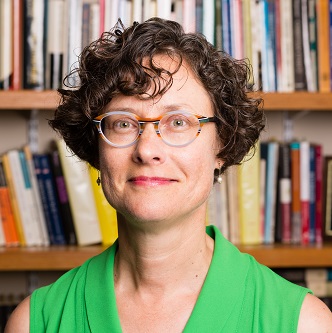Commentary on Genesis 2:18-24
This passage depicts an immanent creator trying to make a fitting partner for the original human. The process initially produces animals, who are deemed as unfit partners for the human. Ultimately surgical division of the human creates the first gendered pair, who reunite in the end. Awe at this marvelous tale should dominate our interpretation. Preachers must handle this passage with care, being mindful of its longtime use as a proof text to condemn family structures that stray from male dominance, female submissiveness, or heterosexual pairing.
Translation matters
Understanding this passage in its original language lies at the heart of insightful interpretation. Genesis 2:18-24 exhibits a folksy style, rooted in the author’s use of word play. Most English translations miss this nuance. Key Hebrew words to explore include:
- ha-adam, “the human” (“the man,” NRSV 2:18-23a)
This word originates in 2:7, where the deity sculpted ha-adam, “the human” out of ha-adamah, “the earth.” “The earthling from the earth” provides a parallel pun.1 Throughout the Hebrew Bible adam most often indicates humans as a gender-inclusive collective. Yet the term adam has the grammatical gender of masculine, thus translators usually pair it with “he/him” pronouns. When preceded by the definite article ha, “the,” as in 2:7-3:12, ha-adam refers to a particular human. Scholars debate whether this figure should be understood as androgynous or male.2 A non-gendered translation for this original human fits the storyline of 2:18-24, especially 2:21-23, though the re-appearance of ha-adam in 2:25 confuses matters. - ish “man” (“man,” NRSV 2:23b-25)
This term indicates a male human, though there are times in the Hebrew Bible where it is used generically for a group. In this passage, we first see ish in 2:23b, following the division of ha-adam in 2:21-22. - ishah “woman” (“woman, wife,” NRSV 2:22-24)
This Hebrew word sounds like its gendered opposite ish, providing poetic balance in 2:23 and illustrating the similarity of the differentiated beings built from ha-adam.
On (the) man and humans
Confusion abounds because many translations provide “man” both for ha–adam in verses 2:18-23a and ish in 2:23b-24. Further complicating matters, in verse 25 ha-adam returns, paired with ishto (“his woman/wife”), even after ‘ish has been created. In 3:17, 21 and 5:1a, 3-5, adam appears without the definite article ha, and therefore it is sometimes translated as a proper name for the male character: “Adam.” Because Hebrew has no uppercase letters, that is an interpretive choice. Traditional English usage of “man,” “men,” and “mankind” as generic terms creates additional difficulty.
- ezer kenegdo, “fitting partner” (“helper as his partner,” NRSV 2:18, 20)
When the term ezer appears in the Hebrew Bible, it usually refers to God. The etiology in 1 Samuel 7:12 memorably illustrates this: Samuel erects a stone monument where God helped Israel, and thus names the place “Ebenezer,” or “stone (eben) of help (ezer).” The joined term in 2:18 and 20, kenegdo consists of ke, “according to”; neged, “facing”; and o, “him”: “a partner corresponding to him.” - tsela “side(s)” (“rib[s],” NRSV 2:21, 22)
The full phrase in 2:21 is “one of his sides.” In 2:22, the Lord God “built the side that he took from the human into a woman.” The term tsela elsewhere refers to a “side” or “chamber” of the sanctuary (Exodus 26:35 and 1 Kings 6:8, NRSV).
Having done this translation work, the passage becomes clearer and more intriguing than its traditional interpretations: The LORD God deemed it “not good” that “the human/adam” be “alone.” The creator thus sought to provide a “fitting partner” by embarking on a trial-and-error process that produced animals, but no ezer kenegdo. Thus the creator turned to surgery accommodated by “deep sleep” to divide the human into ish /“male” and ishah /“female.” The human exclaims “at last,” expressing relief in having a “fitting partner.” These two are made from the same stuff, from the earthling who came out of the earth. Wilda Gafney provides the womanist insight that “[t]hey are as brown as the earth from which they were created.”3 Desire to re-unite the “sides” that had been divided overcomes the ish’s attachment to his family of origin and highlights the value of procreation for ancient Israel.
Descriptive or prescriptive?
This entire passage, but especially 2:23-24, has historically been used to prescribe not only male dominance over women, but also heteronormative marriage. Another way to look at this is as a description of the culture of the ancient Near East, particularly the ancient Israelite emphasis on procreation for the sake of the community’s survival and growth. An etiology in 2:24 explains the origin of that culture. Whether that verse also indicates the way things should be for all time is a question left to interpretive communities.
Preachers of this text should be mindful to provide compassion—and not harm—to those who are single, LGBTQ+, and divorced (especially considering the Revised Common Lectionary’s paired Gospel reading, Mark 10:2-16), as well as their family members. Many of those parishioners will cringe to hear this so-called “clobber passage” read from a place of holy authority.4
The apparently matrilocal portrayal in 2:24, “a man leaves his father and his mother and clings to his wife,” deviates from the patrilocal norm of the ancient world, in which a woman would leave her family upon marriage, becoming linked to her husband’s family.5 Perhaps this counter-cultural description invites us to read against the grain of the passage in other ways also.
Notes
- Carol Meyers, Rediscovering Eve: Ancient Israelite Women in Context (New York: Oxford University Press, 2013), 76. Also see Phyllis Trible, God and the Rhetoric of Sexuality (Philadelphia: Fortress Press, 1978), 80.
- Dexter Callender, “Adam”, n.p. [cited 23 Jun 2021]. Online: http://bibleodyssey.org/en/people/main-articles/adam
- Wilda Gafney, Womanist Midrash: A Reintroduction to the Women of the Torah and the Throne (Louisville: Westminster John Knox, 2017), 21.
- For a powerful illustration of this, see “Queer Eye for the Straight Guy” Season 2, Episode 1; June 15, 2018.
- See Jennie R. Ebeling, “Marriage,” Chapter 4 in Women’s Lives in Biblical Times (New York: T & T Clark, 2010), 81.


October 3, 2021